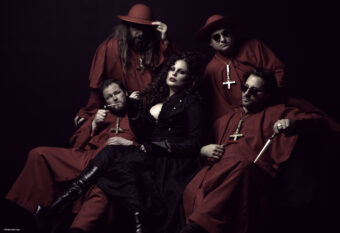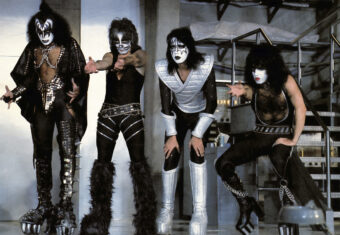To commemorate the release of a new book of Bob Dylan photos by Jerry Schatzberg, who captured the blurry portrait on the cover of Dylan’s 1966 double album Blonde on Blonde, our friends at Stereogum interviewed Schatzberg himself and several other photographers responsible for the images that grace several classic (and not-so-classic) Dylan albums. At least a few of these stories have been told in interviews before, but it’s nice to have them all in one place, giving a range of impressions of Dylan as a photographic subject: from sullen and irascible on the shoot for 1992’s shaky acoustic set Good as I Been to You to childlike and buoyant for 1969’s country-rock effort Nashville Skyline. Both moods show clearly in the resulting photos.
Schatzberg had a close bond with Dylan, who ordinarily did not take well to photographers and journalists, especially during the mid-’60s, when public scrutiny of him was at its highest. But to hear Schatzberg tell it, Dylan was willing and warm as a subject—though the weather was not. The off-focus nature of the Blonde on Blonde cover, he says, did not come from deliberate artistic forethought, but the fact that it was “fucking cold” out in New York that day, and his hands were shaking. From Stereogum:
“The two of us were pretty cold,” he recalls. “We started photographing. It was going pretty well.” Schatzberg shivered and fought to hold the camera still. Many of the resulting images radiated a sense of movement, with Dylan just out of focus. Some viewers interpreted this as suggesting a drug high. “No, it was fucking cold,” Schatzberg retorts in his book.
When the photos were developed, Schatzberg saw that 4-5 of them were a bit blurred. “I liked them a lot, but I figured the record company would never use a blurred picture in those days,” he says. “[But] when Bob saw them, he immediately went to that one and said, ‘That’s the one I like. Send that.’ And that was great. Because usually what Bobby wants, Bobby gets.”
But the most remarkable story is of the grainy portrait that adorns Blood on the Tracks, which almost looks like an illustration. It’s not: Paul Till, an aspiring poet and amateur photographer, snapped it at a Dylan concert in 1974, when Till was just 20 years old. He looked Dylan’s address up and sent him the photo, not thinking anything would come of it, and later received a letter informing him that it would be used on the next album cover. For creating the image that graces one of the greatest albums by one of the musicians who ever lived, Till estimates he was paid about $300.
Read Stereogum’s full story here.





